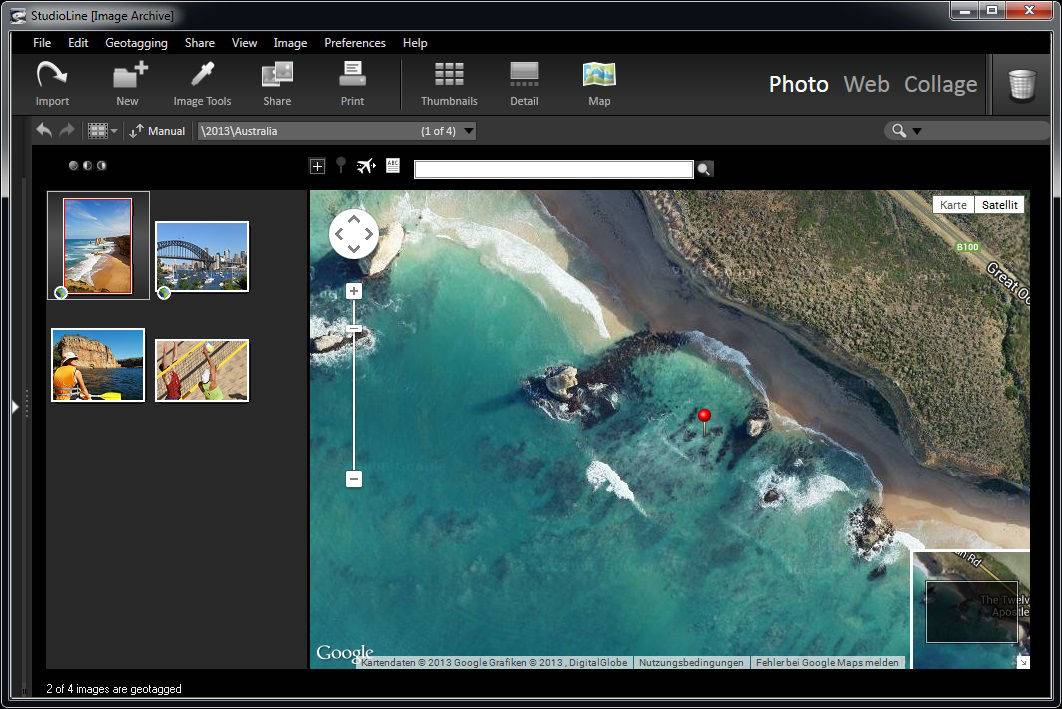Outils pour utilisateurs
Panneau latéral
Ceci est une ancienne révision du document !
Géolocalisation
StudioLine vous permet d'afficher des images qui ont été marquées par des emplacements géographiques, appelés géolocalisation. Vous pouvez lier des données GPS à des images par lieu ou par géolocalisation dans StudioLine. Pour ce faire, les images chargées dans les archives d'images ont besoin d'avoir un fichier journal GPS approprié dans le GPX- ou au format NMEA-0183. Ceci est le même format de fichier utilisé par les appareils de navigation.

To open the Map View, simply click on the “Map” button in the Button Bar. The Image Archive pane displays all of the images in your selected folder as thumbnails in a left-hand panel, with a Google map on the right. Images in your folder that are already Geotagged will have a small icon in the lower-left hand side of the image. The Google map in the right-hand pane will automatically display the image's position on the map and mark it with a blue arrow.
If you have tagged your image, you can view the position on Google Maps by clicking on the Geotag button below the image in Image Archive. This will launch the Map View and the image's location will be displayed in Google maps on the right.
For images that need to be Geotagged, simply type in the name of the location in the menu bar, and the Google map will automatically position itself there. You can fine tune the location by zooming in and out on the map and using the cross-hair to specify exactly where the location should be marked.
Once you have found your location on the map, and positioned the cross-hair exactly on the intended place, then you can use the 'apply position' button to Geotag the image. All the images currently selected will then acquire that Geodata. The name for this location will be automatically acquired via the internet (GeoNames). For images that already have GPS coordinates associated with them, but need the name of the location to be included in the descriptor, simply click on the Retrieve Location Names button. The location names will be acquired and assigned to the image.
In order to view the Geotagged positioning of more than one image at once, click on the Optimize Scale button and the Google map will be adjusted to include all the locations of your currently selected photos on one map.
Importing and Exporting a Geotagged Image in .KML
KML is a file format used to display geographic data in an Earth browser such as Google Earth, Google Maps, and Google Maps for mobile. If you want to upload your geotagged images to Google Maps or Google Earth, simply select them in the Image Archive, right-click and go to the Geotagging/Create KML file with thumbnails. A .kml file is then generated that allows you to upload the your image to any of these commerical programs for viewing online. This is particularly useful if you want to create a web gallery that indicates the location where the image was created on a map.
You can also import .kml data andimages from third parties by going to the Geotagging menu and selecting Import KML file.
